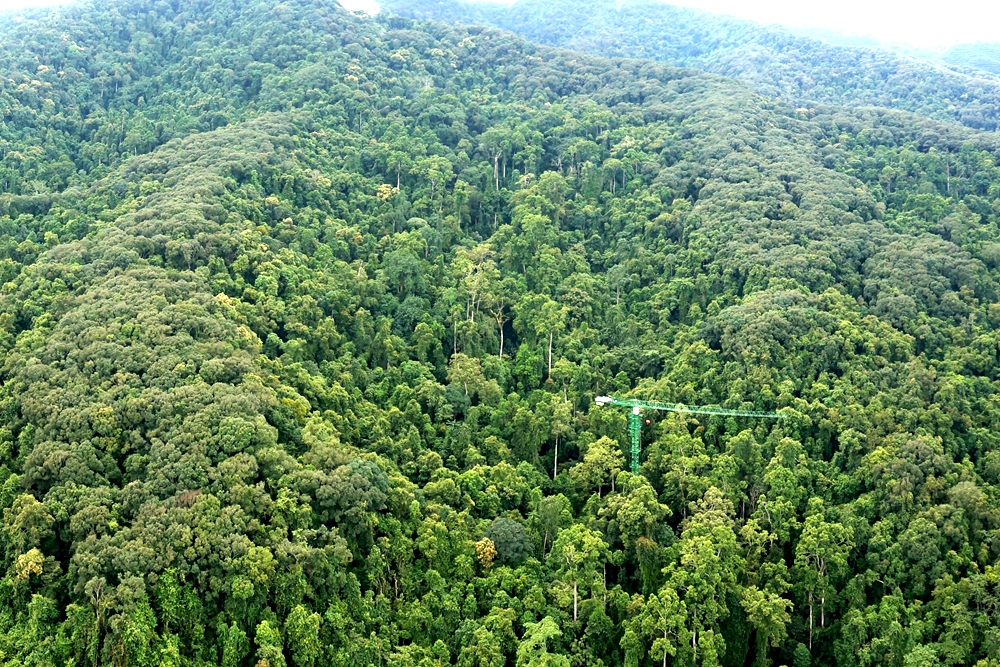Factors shaping the interspecific variations in herbivory have puzzled ecologists for decades and several hypotheses have been proposed. However, we still lack a clear evaluation on the direction and relative contribution of plant size, species richness, community composition and growth strategy to the variations in herbivory.
In a study published in Ecology on March 10, researchers from Xishuangbanna Tropical Botanical Garden (XTBG) and Research Center for Eco-Environmental Sciences of the Chinese Academy of Sciences have evaluated the effects of canopy height, neighbor species richness and composition, as well as leaf traits on leaf herbivory in a tropical rainforest.
With the help of an 80-m-tall forest canopy crane, the researchers collected 6,732 leaves from 129 species with canopy heights ranging from 1.6 m to 65 m above the ground in a tropical rainforest in Bubeng, Xishuangbanna.
Through an observational study of the variations in leaf herbivory across 129 plant species, they found that herbivory varied with plant morphological (canopy height, leaf size) and growth strategy trait.
Based on parameter estimation of the full model, the researchers found that among the seven variables, three (canopy height, leaf size, and specific leaf area) showed significant effects on herbivory, while the other four variables (neighbor species richness, conspecific neighbor abundance, total neighbor abundance, and the standard deviation of neighbor tree heights) showed no association with herbivory.
The researchers detected a clear negative effect of canopy height on herbivory. Leaf herbivory decreased with canopy height and specific leaf area and increased with leaf size. Species with lower canopy heights and larger leaves tended to have higher herbivory levels.
However, they found no effect of neighbor species richness, composition, and structural heterogeneity on the variations in herbivory. Therefore, no evidence of associational resistance or associational susceptibility was detected.
"Our findings provide new insights into the interspecific variations of herbivory in higher diversity and structural complexity forest ecosystems. The vertical variation in plant-herbivore interaction and its ecological effects in maintaining diversity in tropical forests should not be overlooked," said XU Guorui, co-lead author of the study.

Forest canopy crane in Xishuangbanna tropical rainforest. (Image by XTBG)






